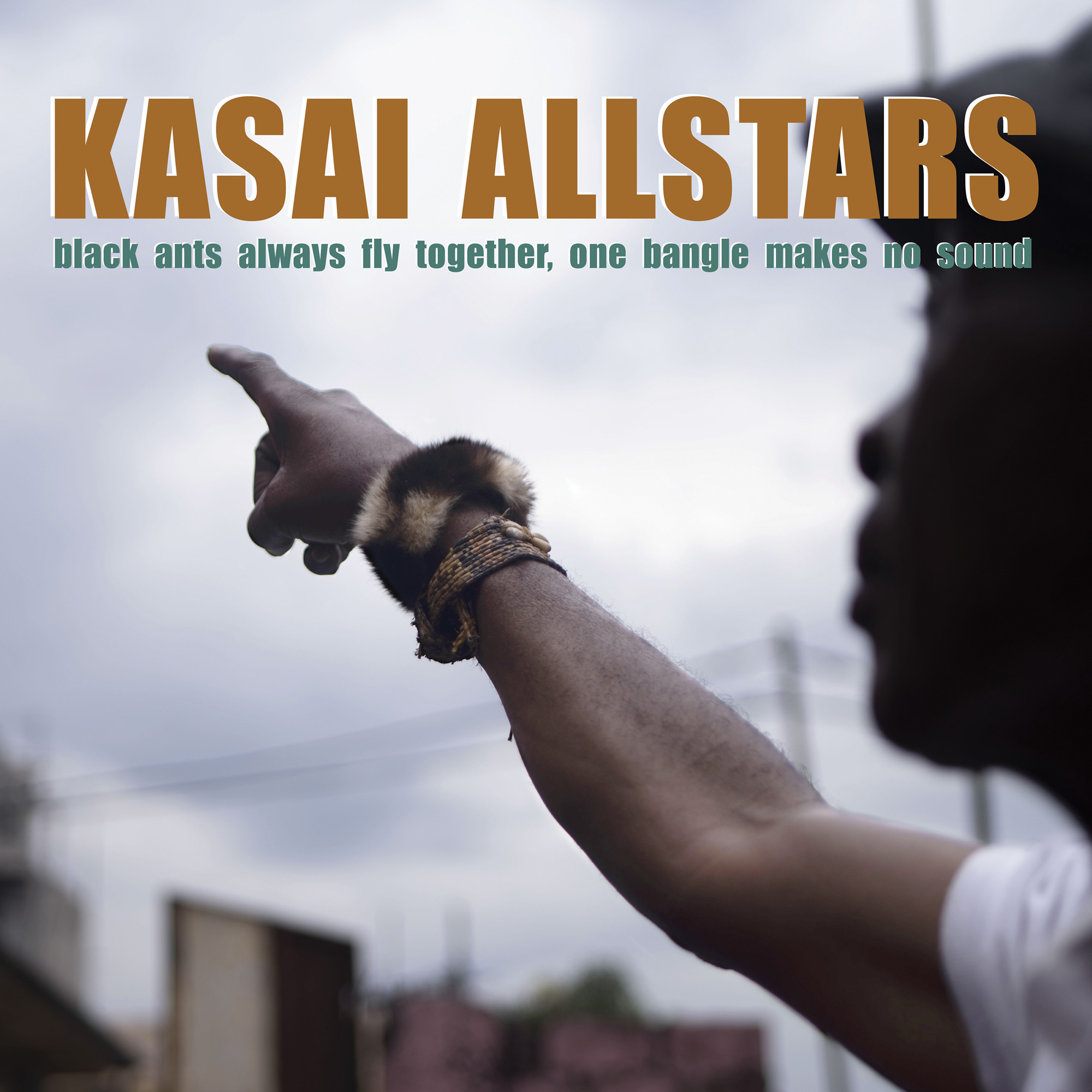
They draw their songs from festive and ritual music played in the bush before being banned by the Europeans, who considered the highly erotic dances and the pagan trance ceremonies as "satanic".
The collective revolving around 25 musicians from five bands, all from the Kasai region, but originating from five different ethnic groups: the Luba, the Songye, the Lulua, the Tetela and the Luntu. Some of these groups have endured conflicting relationships over the centuries, they each have their own culture, their own language and their own musical traditions, which were always thought to be incompatible until these musicians decided to pool their resources and form a "superband".
Kasai Allstars' music is powerful and sophisticated, driving and raw. It blends acoustic instruments with electric guitars, distortion-laden thumb pianos (with DIY amplification) and soulful vocals. Compared to Konono N°1 (whose minimal and effective sound has been massively adopted by the international electronica, world music and alternative rock scenes), Kasai Allstars use a broader array of instruments & textures, and wilder, more complex polyrhythms. They often sound like some kind of retro-futurist primeval rock band ("This is rock sucked back to the continent of its birth to be granted a glorious resurrection", wrote UK magazine The Word)
While the cultural aspect of their work is important to them, the members of the Kasai Allstars collective are first and foremost musicians and performers, who decided to try and throw their respective traditions, styles, languages and instruments into a common musical sandbox. This process (which means that they often have to invent new parts, and adapt certain musical patterns for instruments that normally don't play them), as well as the band's interaction with modern amplification and production techniques (through their collaboration with the producer of the album, Vincent Kenis), all give an exciting and very creative angle to the project.
Part of the special appeal of Kasai Allstars' music comes from the diversity and charisma of the band's vocalists – no less than six of them perform lead vocals on the album – and instrumentalists (see details).
The band's live show is really something not to be missed. The wild, driving rhythms and exhilarating vocals are as exciting as those heard on this album, and are further enhanced by spectacular dancing.
Kasai Allstars' In The 7th Moon... album will now (Spring 2010) be also released on vinyl, only as part of the limited-edition 7-vinyl Congotronics Vinyl Box Set, only available on pre-order from the Crammed online store
Players, Singers and Dancers
Mputu Ebondo 'Mi Amor': lead vocals
Muambuyi: lead vocals, dancer
Mbuyamba Nyunyi: lead vocals, bass likembe (thumb piano)
Kabongo Tshisensa: lead vocals, likembe, bass likembe
Tandjolo: lokole (slit drum), lead vocals
Tshilumba Muamba 'Baila' and Didi Bafuafua: xylophones
Tshimanga Muamba: resonator drum
Kalenga Ditu: likembe
Mopero and Niawu: electric guitars
Kabese Ngandu 'Bondis': vocals, percussion
Ngalula Ndaye Sylvie, Bosio Tokala Mamie, Yempongo Kadiya, Tete Mutungilayi and Kanku Nshinga Wa Buanda: vocals and dancing
Mpanya Mutombo: lead vocals (track 6)
Gaby Nsapo Kilolo: guitar and vocals (track 6)
The Original Bands
The Kasai Allstars collective was formed by members of the following bands: Lusombe Madimba, Tandjolo, Dibua Dietu, Basokin and Masanka Sankayi. The latter two appeared alongside Kasai Allstars, Konono N°1 and several others on the multiple-artist Congotronics 2 album.
















